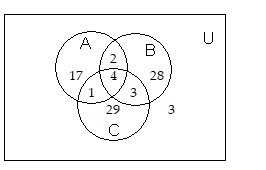Solve the problem.For the following function, find the next six values of the sequence, starting with  (
(

 Then determine whether each of the equilibrium points 0 and
Then determine whether each of the equilibrium points 0 and  appears to be stable or unstable.f(x) =
appears to be stable or unstable.f(x) =
src="https://sciemce.com/media/4/ppg__tttt0530191128__f1q19g6.jpg" style="vertical-align: -17.0px;" />x(1 - x2)
What will be an ideal response?
a. 0.2080, 0.2156, 0.2227, 0.2293, 0.2353, 0.2408
b. 0.3640, 0.3421, 0.3272, 0.3165, 0.3086, 0.3024
c. 0.4160, 0.3727, 0.3477, 0.3311, 0.3194, 0.3107
d. 0.3120, 0.3051, 0.2998, 0.2956, 0.2922, 0.2895
0 is unstable;  is stable.
is stable.
Mathematics
src="https://sciemce.com/media/4/ppg__tttt0530191128__f1q19g6.jpg" style="vertical-align: -17.0px;" />x(1 - x2)
What will be an ideal response?
a. 0.2080, 0.2156, 0.2227, 0.2293, 0.2353, 0.2408
b. 0.3640, 0.3421, 0.3272, 0.3165, 0.3086, 0.3024
c. 0.4160, 0.3727, 0.3477, 0.3311, 0.3194, 0.3107
d. 0.3120, 0.3051, 0.2998, 0.2956, 0.2922, 0.2895
0 is unstable;  is stable.
is stable.
You might also like to view...
Decide if an Euler circuit exists for the graph.
A. Yes B. No
Add or subtract. Assume all variables represent positive real numbers.6 + 8
+ 8
A. 14
B. 14
C. 6 + 8
+ 8
D. 48
Use the information given in the figure. How many are in B and C?
How many are in B and C?
A. 4 B. 67 C. 7 D. 60
Solve the problem. Round your answer to the nearest tenth of a percent, if necessary.51.2 is what percent of 6?
A. 1.2% B. 8,533.0% C. 11.7% D. 853.3%